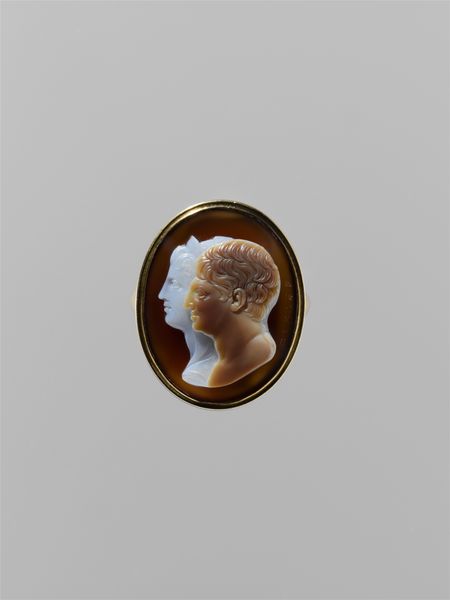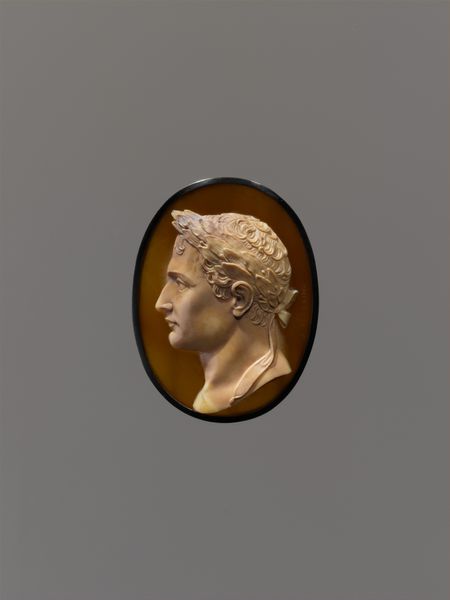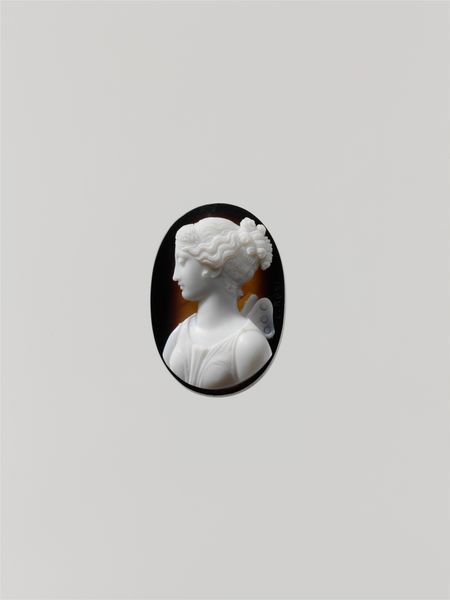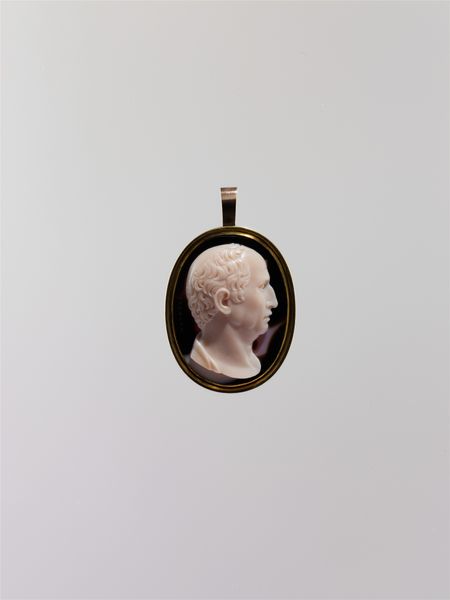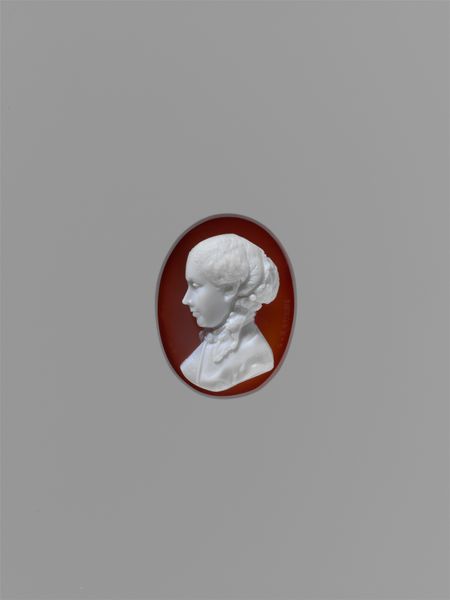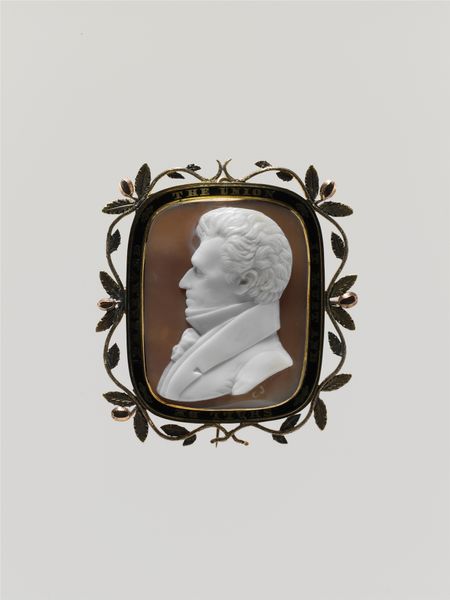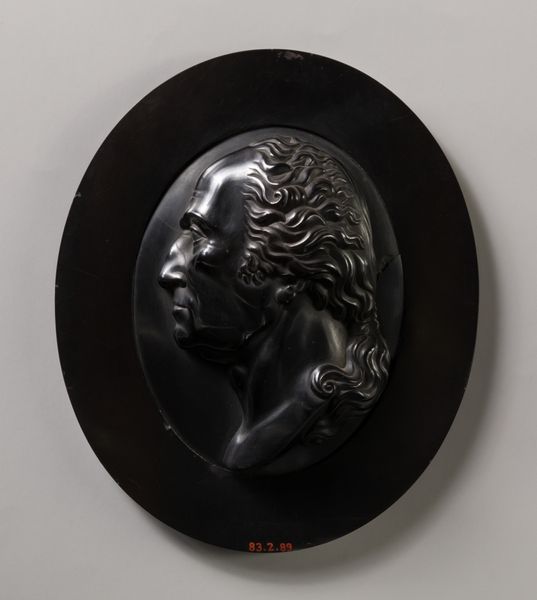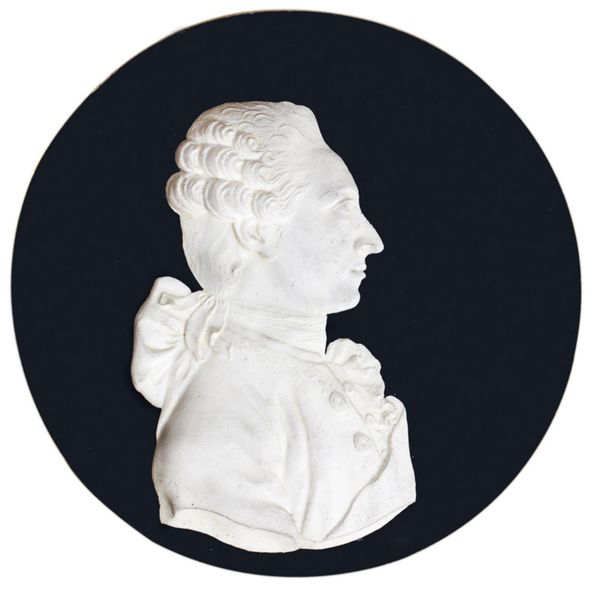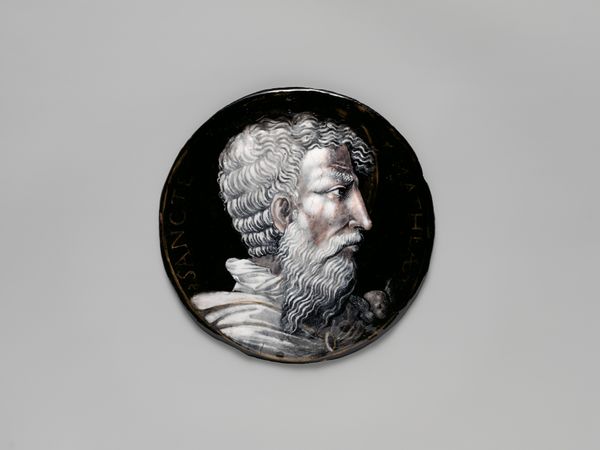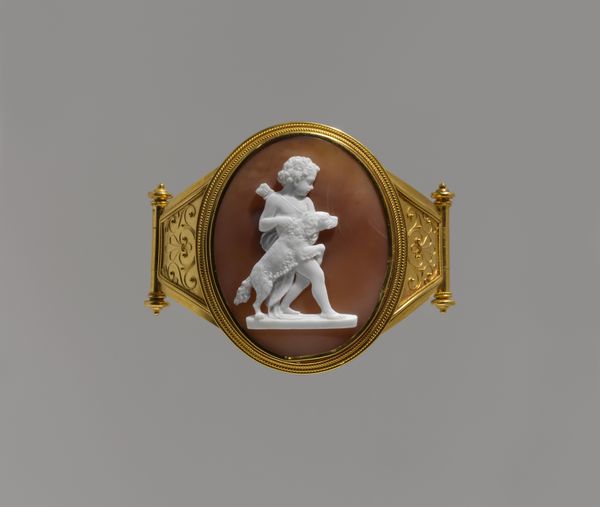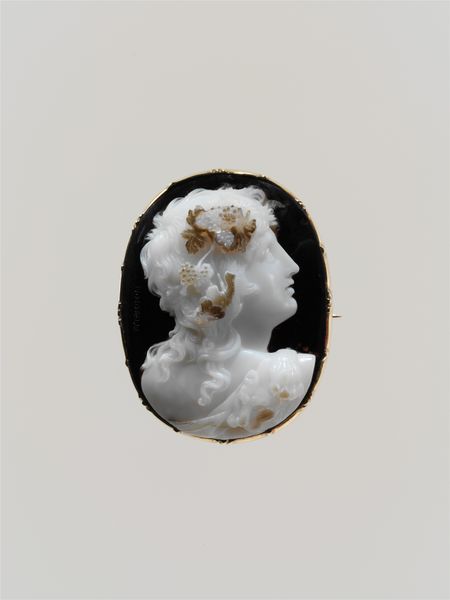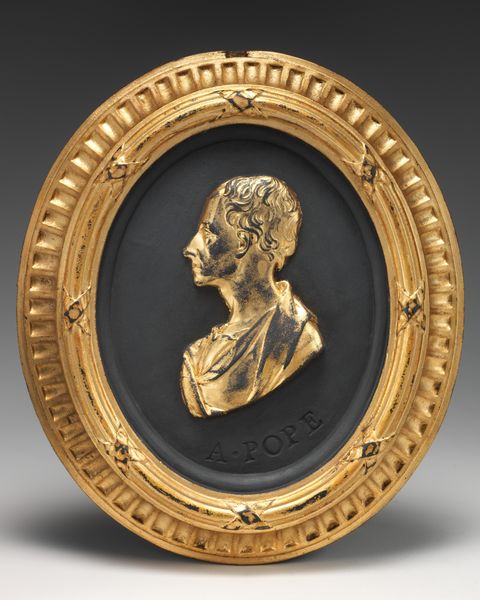
carving, relief, sculpture, marble
#
portrait
#
neoclacissism
#
carving
#
relief
#
classicism
#
sculpture
#
decorative-art
#
marble
Dimensions: Overall: 7/8 x 3/4 x 1 in. (2.3 x 1.9 x 2.6 cm); visible cameo (confirmed): 19.1 x 14.7 x 6 mm
Copyright: Public Domain
Curator: Isn't it interesting how objects, especially portraits, can whisper stories across centuries? What's your first take on this piece? Editor: The immediate impact is the contrast, almost theatrical. The stark white figure against the black ground—it evokes a sense of drama, or perhaps solemnity? Very deliberate. Curator: Indeed! What we’re looking at is a marble relief, depicting Cicero, created sometime between 1800 and 1815 by Giuseppe Girometti. It lives here at The Met. Girometti was a master of neoclassical carving, wasn't he? I mean, look at the crisp detail—the curl of the hair, the set of the jaw... feels timeless, right? Editor: Absolutely timeless… but also consciously invoking an ideal. The choice to render Cicero in this way, in marble no less, signals a very specific understanding—or perhaps even a co-opting—of classical virtue and Roman Republicanism in the early 19th century. I am very suspicious about any return to classicism. What stories is this perfection obscuring? Curator: That's a powerful question. I tend to get caught up in the beauty of the craftsmanship. Thinking about how the artist turned stone into what almost appears alive… do you see it as complicit in power structures? Editor: It is a romantic idea to only see craft, when you see the deliberate employment of marble—a material freighted with so much historical baggage—to create this kind of idealized image of Cicero… a known and active oppressor? Yes, absolutely complicit. Art doesn’t exist in a vacuum, and neither did Cicero. Curator: You’re right, context matters. I guess for me, it's a reminder of art’s ability to evoke so much more than meets the eye. Beauty, and sometimes, a bit of historical baggage we need to unpack. Editor: Precisely! It's a dialogue between the aesthetic and the historical, forcing us to grapple with the complexities inherent in even the most seemingly straightforward representation.
Comments
No comments
Be the first to comment and join the conversation on the ultimate creative platform.
